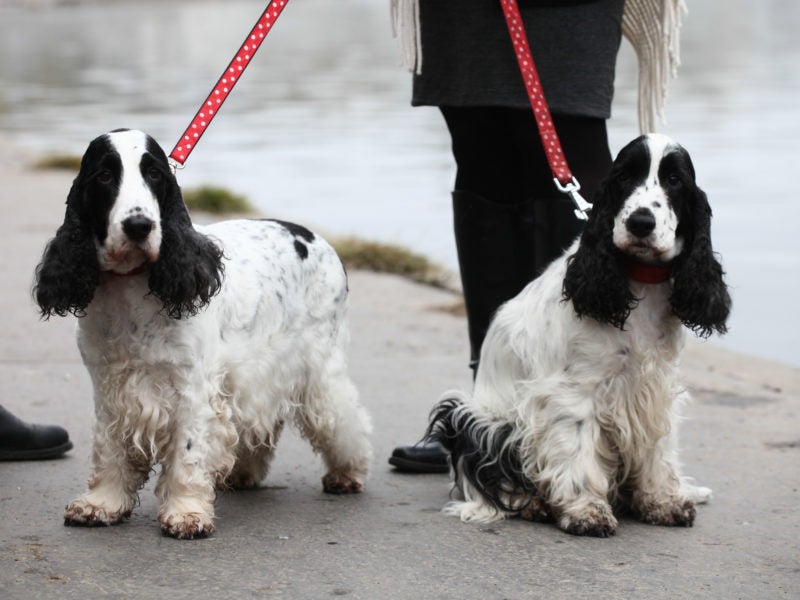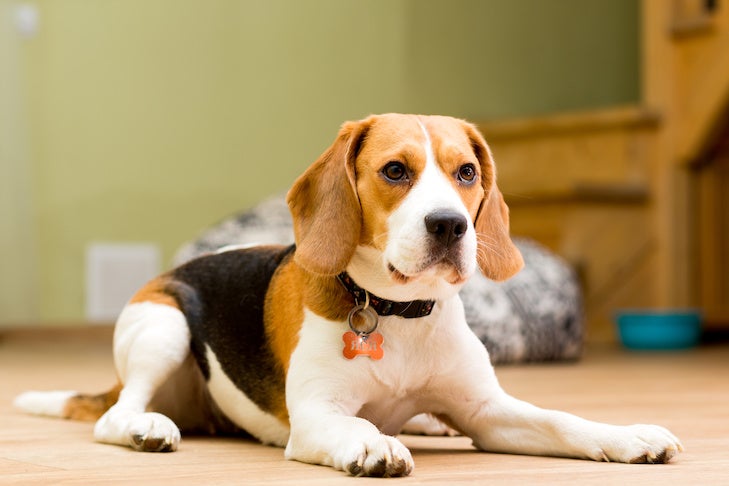
From the French Bulldog to the Pembroke Welsh Corgi, small-to-medium dog breeds are some of the most popular dogs in the world. They’re a great in-between dog. While many still act like lap dogs, they can play like bigger dogs. These pups love to play, be close to loved ones, and protect their families. Like all dogs, they require regular exercise, mental stimulation, and a regular health routine.
Here’s what you should keep in mind if you’re adding a small-to-medium sized dog to your family.
Public Safety for Small-to-Medium Dogs
Socialization is essential for every puppy to help ensure they become well-adjusted, sociable adult dogs. When you take your dog on the go, it’s important that he’s always under control.
“Small dogs are sometimes thought of as toys or fun accessories, but they are very real beings that require proper thought and planning before obtaining and proper care throughout their life,” said Dr. Jerry Klein, AKC’s in-house veterinarian.
Dr. Klein also stressed that even though some small/medium dogs are often carried around, they still need to be properly under control with a collar, leash, and permanent microchip.
When small/medium dogs are outside or in the public, you need to keep an eye on them because they can sometimes become “prey” to larger dogs or other wild species such as cougars.
One benefit of a small/medium dog is that they’re easy to bring to pet-friendly places. Unlike toy breeds, they typically don’t get stepped on or lost in the shuffle, and they usually aren’t perceived as a threat like some bigger dogs. However, it’s important to avoid bringing him to places that aren’t dog-friendly because it can cause access challenges to real service dog teams.
Home Safety for Small-to-Medium Dogs
Making your entire home puppy proof is critical when you first get your dog. New dogs love biting and getting into things they’re not supposed to. Make sure to remove anything that your dog can swallow, create a safe place for them in their crate, and block stairs so they don’t fall down them.
If your dog is on the smaller size, consider purchasing doggie stairs or ramps to help your dog move around high furniture. Large jumps can result in injuries.

Training Small-to-Medium Dogs
It’s important not to limit these dogs’ opportunities — they love to learn, play, and explore just as much as big dogs. All dogs require adequate training. Even though a growl from a smaller dog might not seem as threatening, it’s still important to make training a priority to raise a friendly dog.
When you’re training your pup, Dr. Klein recommends being “gentle, positive, kind, firm, and consistent.”
Along with at home training, consider registering your dog for puppy classes, and continue obedience classes throughout your dog’s life.
Activity for Small-to-Medium Dogs
Like all dogs, these pups require regular activity and are fairly active. Make sure to take your dog on regular walks, which helps with both mental and physical stimulation. However, it’s important to take their breed into account and recognize their limitations. For example, French Bulldogs are a flat-faced breed and are prone to breathing difficulties, therefore Frenchies shouldn’t exert themselves in hot and humid weather.
Smaller breeds are also closer to the sidewalk and are more sensitive to heat or the cold, Dr. Klein said. So it’s important to take that into consideration when you’re walking your pup. “Activity levels of each breed should be considered when making a decision on the right type of dog for you and your family’s lifestyle,” Dr. Klein explained.
Dog sports are great for small/medium dogs. If given the chance, these dogs love participating and will excel at sports like obedience, agility, and rally.
Just the Right Size
You can find a Small-to-Medium sized dogs to fit almost any lifestyle. From urban cities to suburban life, Dr. Klein explained that these dogs do well almost anywhere or with anyone, as long as they get proper physical and mental stimulation. For example, a Miniature American Shepherd may do better outside of an apartment, where the dog has space to do what it was bred to do. A terrier may be small, but isn’t always the best lap dog or family pet.
Their owners “can be young or old. People who like to travel by air with dogs. Those who don’t necessarily need an athletic companion for their activities or do.”
Not too big, not too small. These pups are the perfect in-between. They’re big enough to withstand young children but are still mobile, love to cuddle, and have playful and kind personalities. No matter the breed, they’re friendly, love to please, and a great addition to almost any household.
This article is intended solely as general guidance, and does not constitute health or other professional advice. Individual situations and applicable laws vary by jurisdiction, and you are encouraged to obtain appropriate advice from qualified professionals in the applicable jurisdictions. We make no representations or warranties concerning any course of action taken by any person following or otherwise using the information offered or provided in this article, including any such information associated with and provided in connection with third-party products, and we will not be liable for any direct, indirect, consequential, special, exemplary or other damages that may result, including but not limited to economic loss, injury, illness or death.

